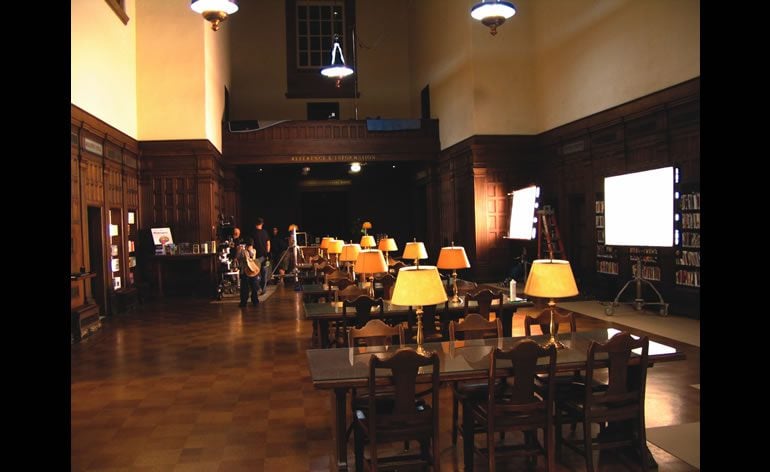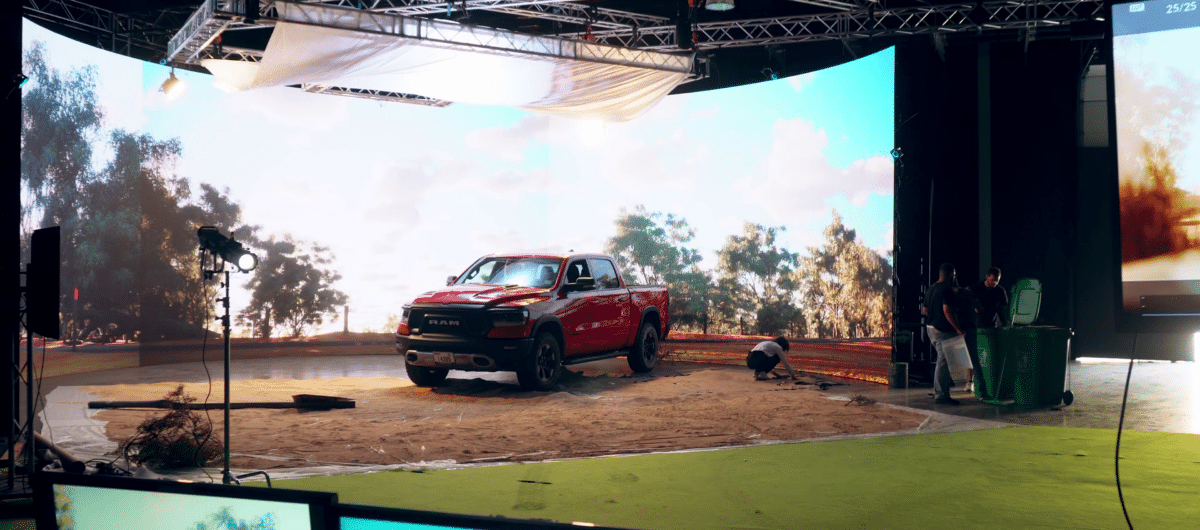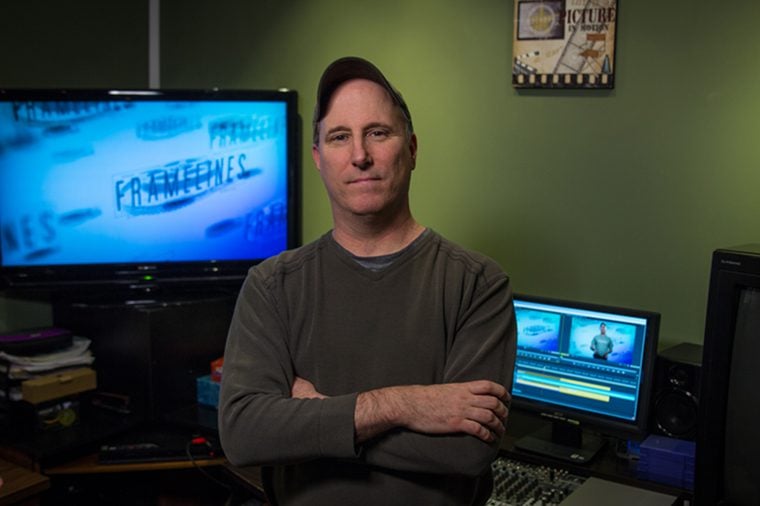Reference: StudentFilmmakers Magazine, June 2007. Lighting Big Spaces: Challenge of Working with Larger Units on Low Budget By Kevin Zanit. Pages 6, 8 – 9.
In my last article I discussed some issues one encounters when shooting in very small spaces. I recently wrapped a commercial that had an entirely different problem – lighting a huge space.
In theory the principles of lighting a big space should be the same as lighting a smaller one but with just bigger lighting units. To some extent this is true, however, one has to factor in the new challenges that come with working with larger units, such as the time they take to setup and how much additional space and power they require.
The concept was simple – pretty much a librarian moving through this big, older library after hours.
Of course, the big challenge was lighting this large space on a low budget. On top of that, any solution would have to be very low-profile because the space was fairly narrow, (as can be seen in this picture from my location scout). So to get nice wide shots, any lighting from the ground could not be very deep.
I wanted to motivate light from about 30 table lamps that went down the center of the room for almost the entire length. My gaffer (Chris Hughes) and I were having trouble coming up with the best solution for keying this long walk next to the lamps because we would see both walls of the room from time to time. Originally, we were planning on some 9-lights through very heavy diffusion but didn’t really feel this was the best solution because of how deep a
9-light with large frame of diffusion is, even if very close to the light.
Then I remembered Lumapanels. They are 7 feet long by 4 feet tall and 5 inches deep. They consist of 28 fluorescen tubes, and the entire unit can either use a vertical or horizontal bale. These were perfect for us. I called the company and ended up speaking with Dave Devlin (creator of the unit, not to mention an extremely good gaffer). He helped us get a few of them at a price we could work with, and recommended trying 1/2 soft frost with the units. They worked great. Very beautiful lights.
So we used a row of the Lumapanels to key the actress for her walk. The next problem was how to bring up the middle of the room with some general ambiance. The solution was an 8k balloon light floated up to the ceiling in the middle of the room.
There were also several halls of books that were across from the tables. We put something like 16 2k zips far back to make some nice ambiance as she walked across them.
For a nice backlight on her we used a Big-eye 10k up on a balcony.
Unfortunately, the building was extremely old and had very narrow hallways up to the balcony, so the crew had to hoist this big light up to the balcony with rope. They did a great job, and did it fast and safely. One of the new challenges one encounters with larger lighting units.
To key her in close ups I either used a large Chimera, another Lumapanel, or some other soft source.
To top everything off, at the end of the commercial, in a wide shot, every single light in the room cross fades with an extremely hot top light. That meant that everything had to be wired into a dimmer, over 30 table lamps, 16 soft boxes, the 10k, and the balloon. That made for an interesting cable run. They used a CD80 and single 20k dimmer (for the 220 balloon). Of course the Lumapanels can’t dim, so for that one shot we supplemented their light with a 9-light through a 12×12 frame.
The piece was shot on a Panavised F900.
We wanted a very classy, soft look. So I netted the rear of all the lenses, and sometimes used either a 1/2 or 1/4 classic soft, or #1 glimmer glass in front.
I have to thank my great crew: Gaffer, Chris Hughes and his crew; Key grip, Adam Ginzink and his crew; Operator,
Ken Bender; 1st AC, Darryl Harrington; and DIT, Elhanan Matos.
Also, our venders were very helpful.
Thanks to Phil Radin at Panavision, Eric Hall at Hollywood Rentals, and Dave Devlin at Lumapanel.
It is important to come into a big location with a good plan that at the very least covers your broad strokes in
lighting a large space. There is still room to be instinctive on the day of, but if you don’t plan the major stuff, there will be no time for you to work on the small details.
Kevin Zanit is a cinematographer based in California. His experience is mostly in music videos and does narrative work as well. His filmography includes Room Service (2006), These Days (2006), Inner Prison (2005), and Passing Moments (2003).





